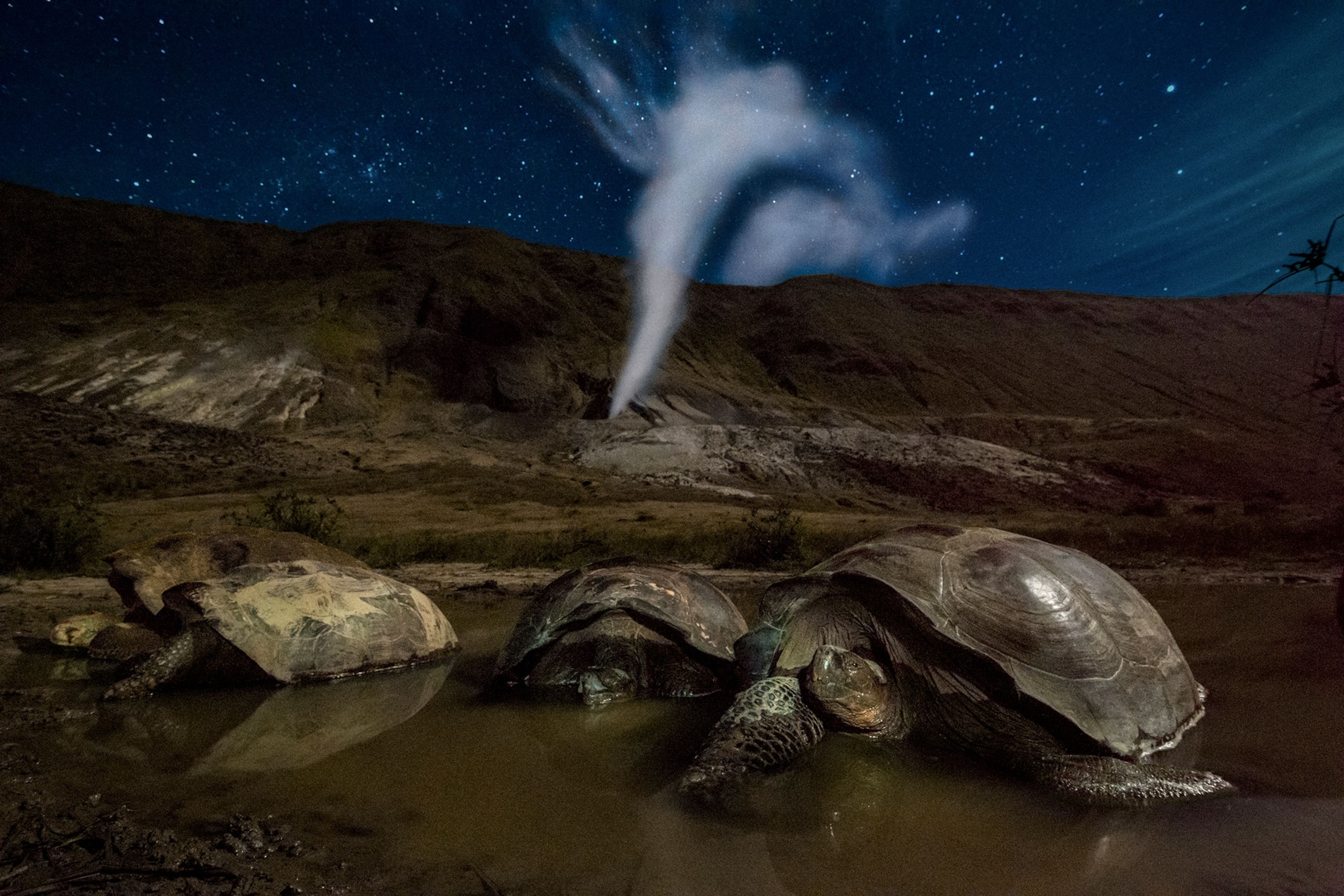
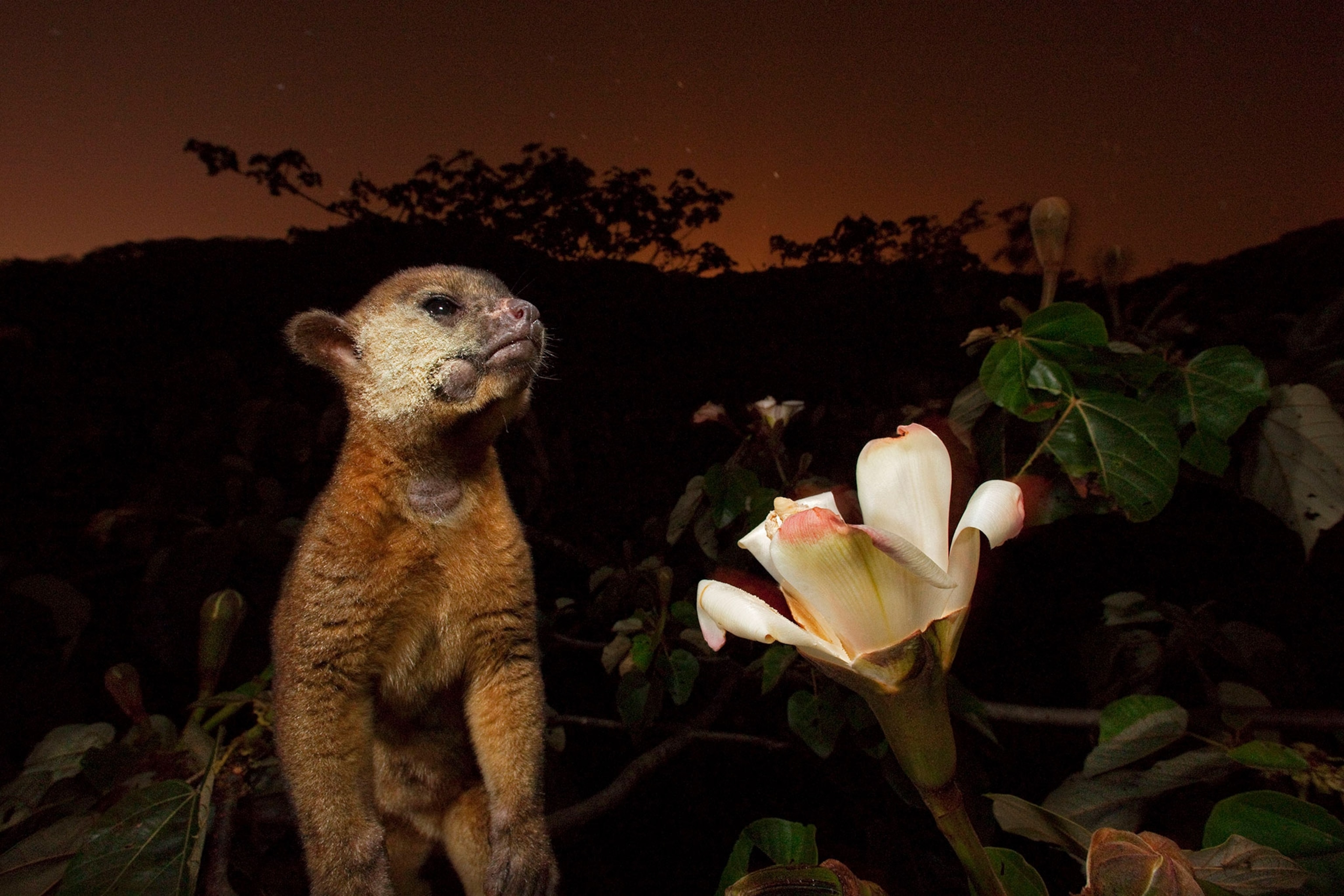
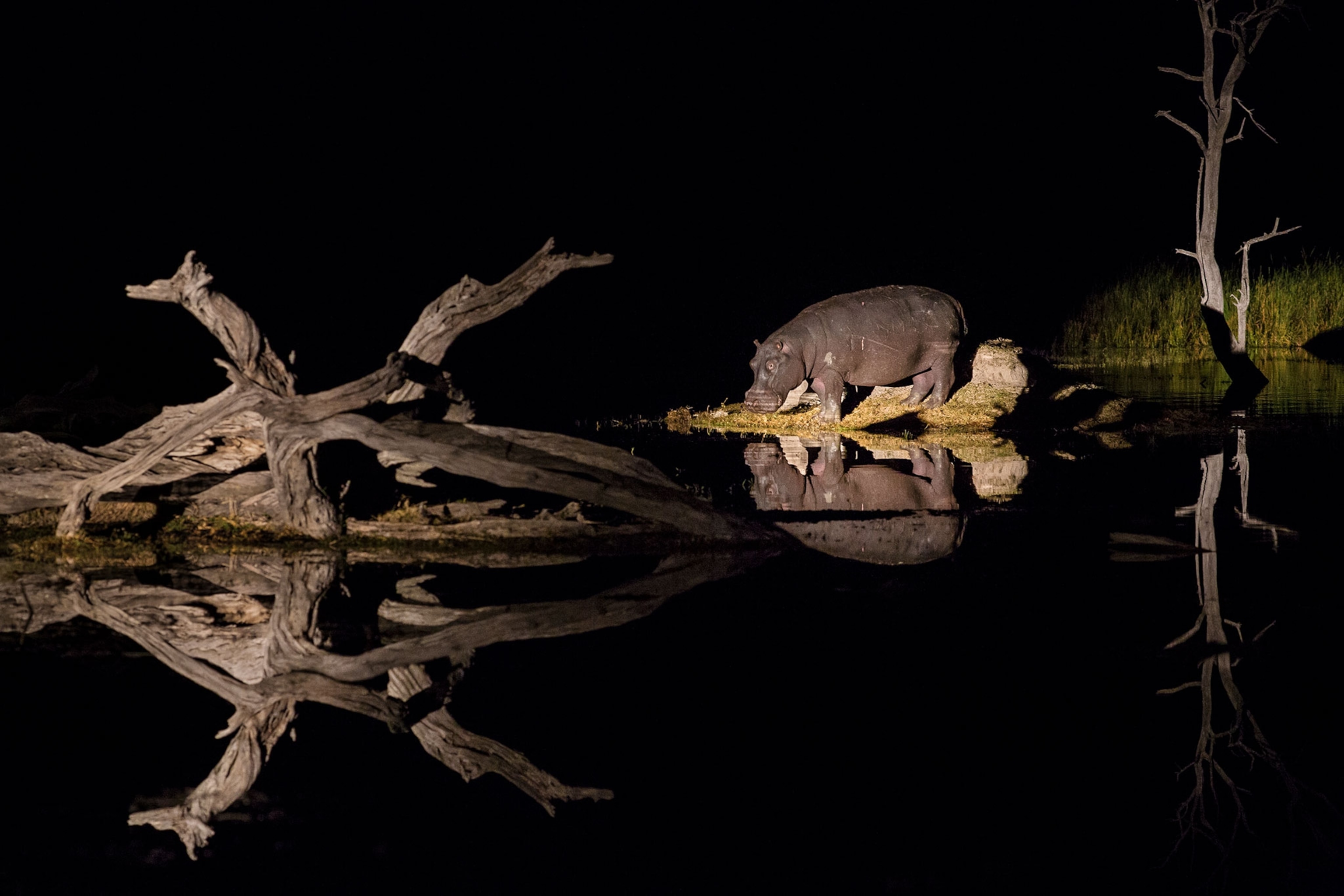



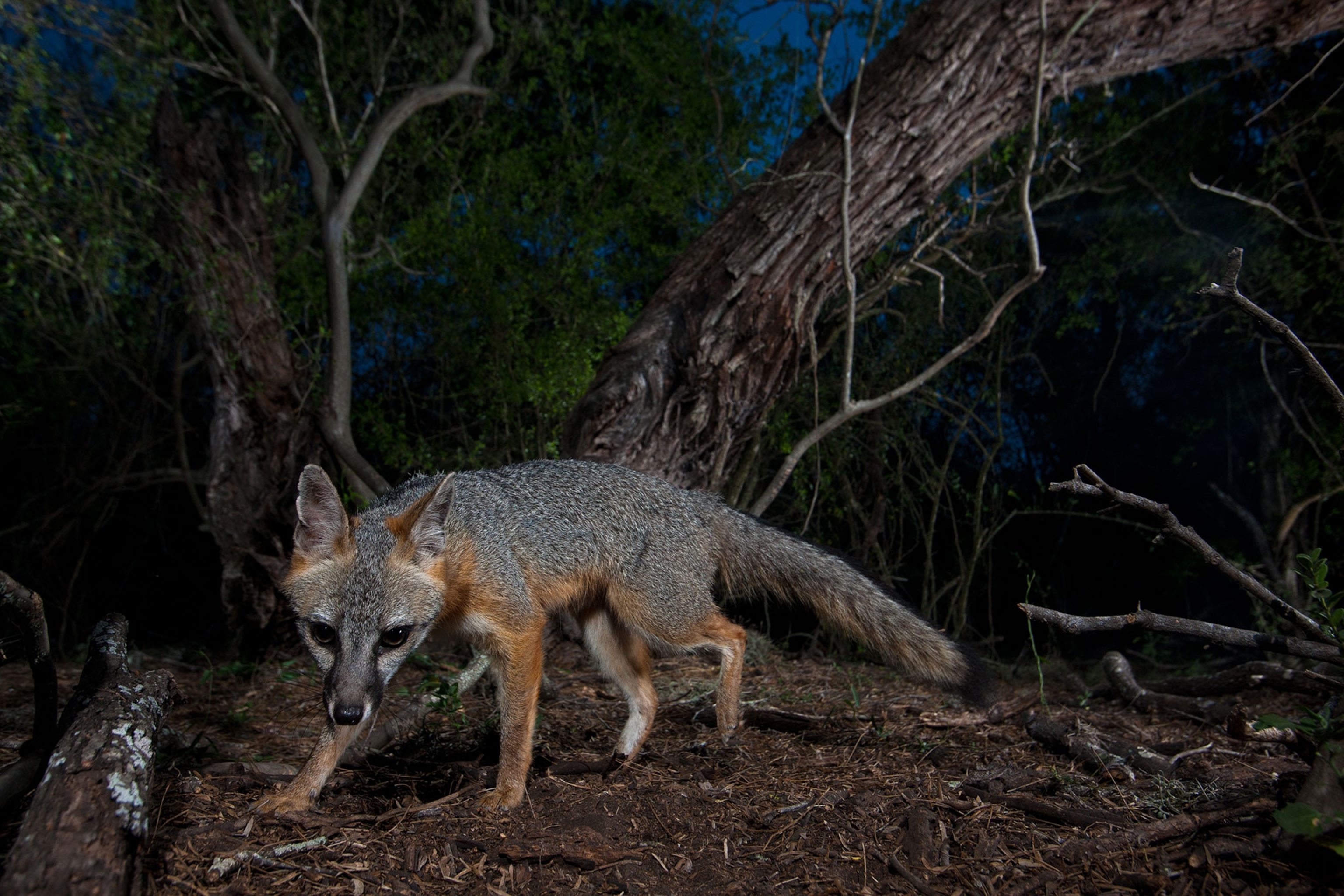
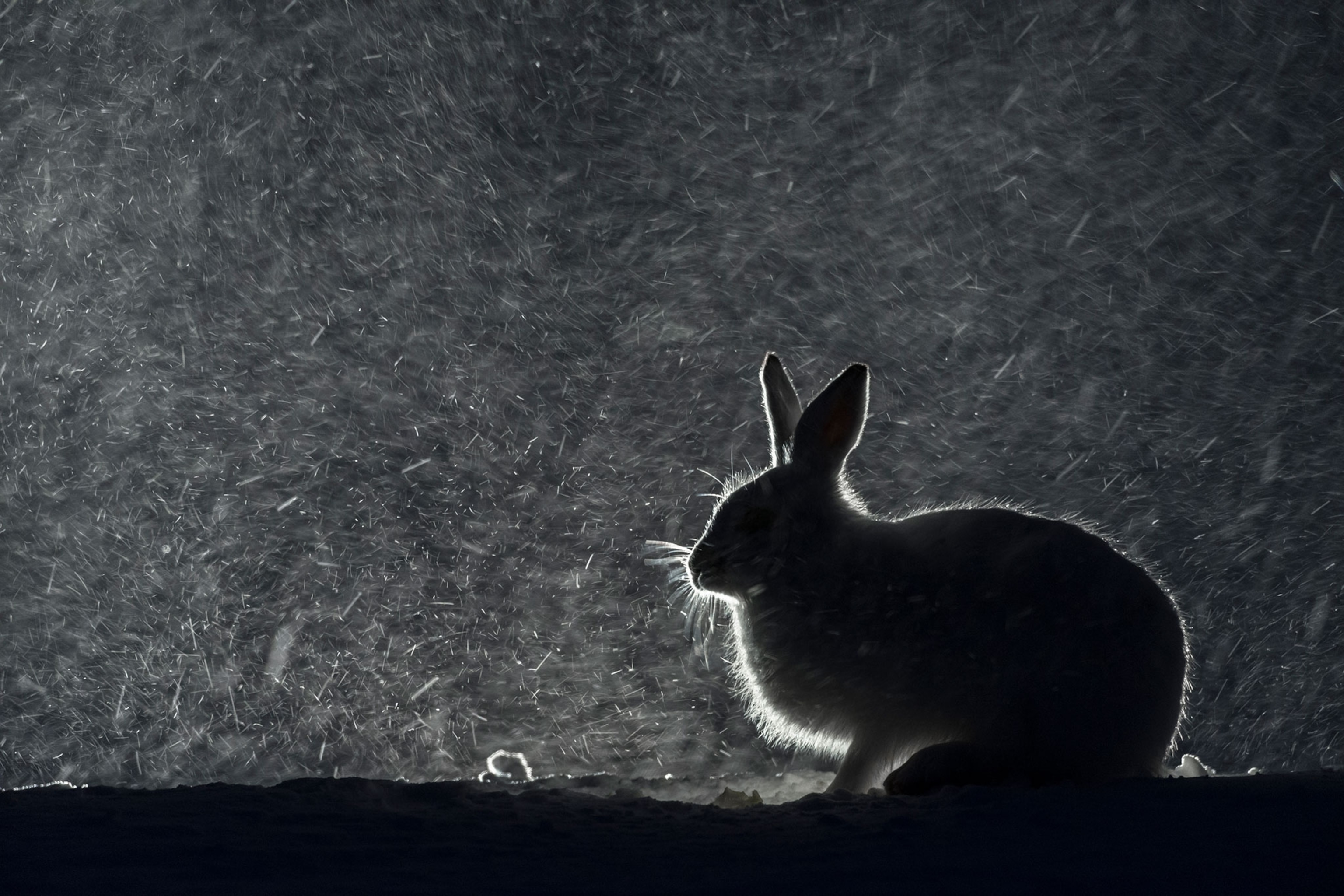





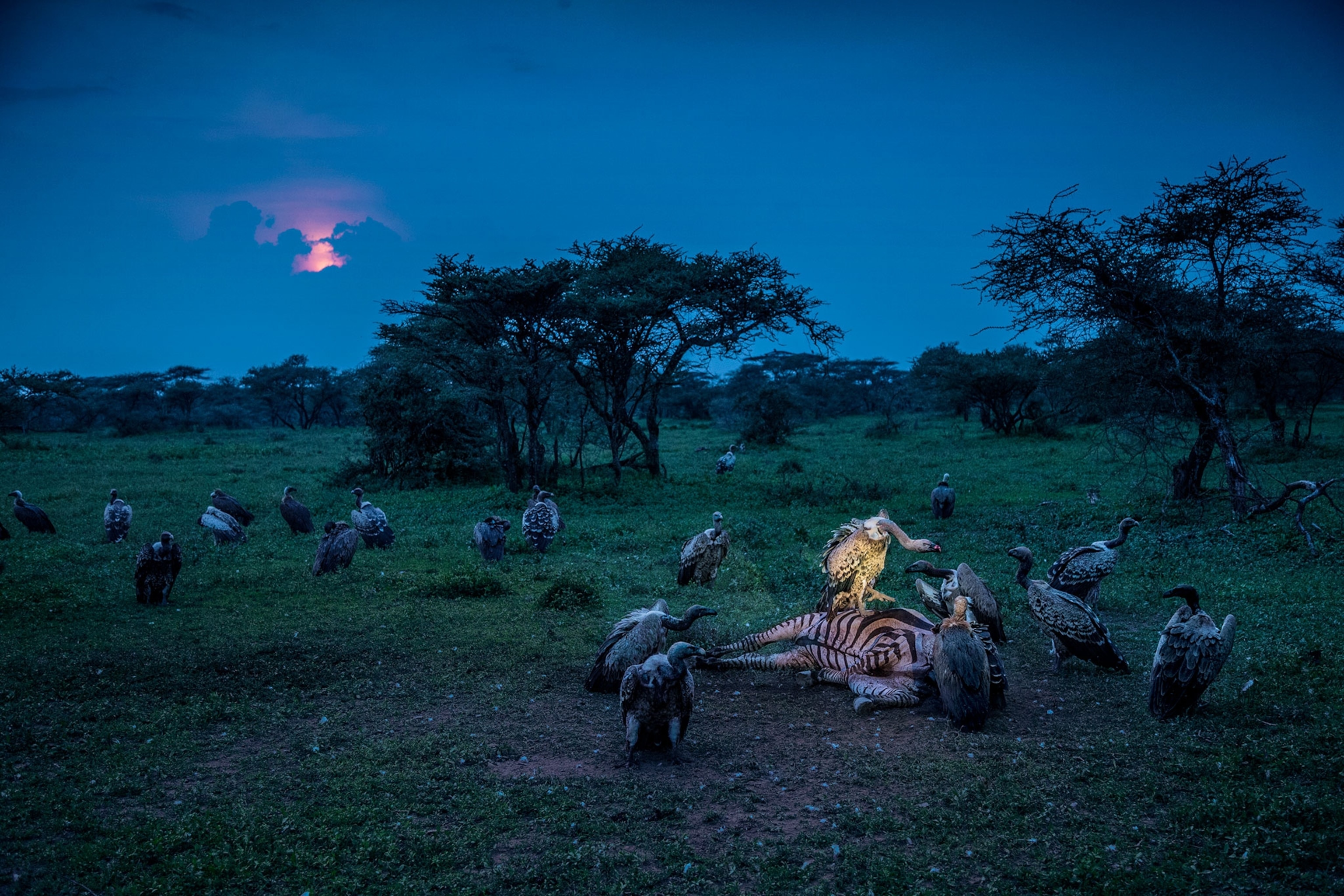
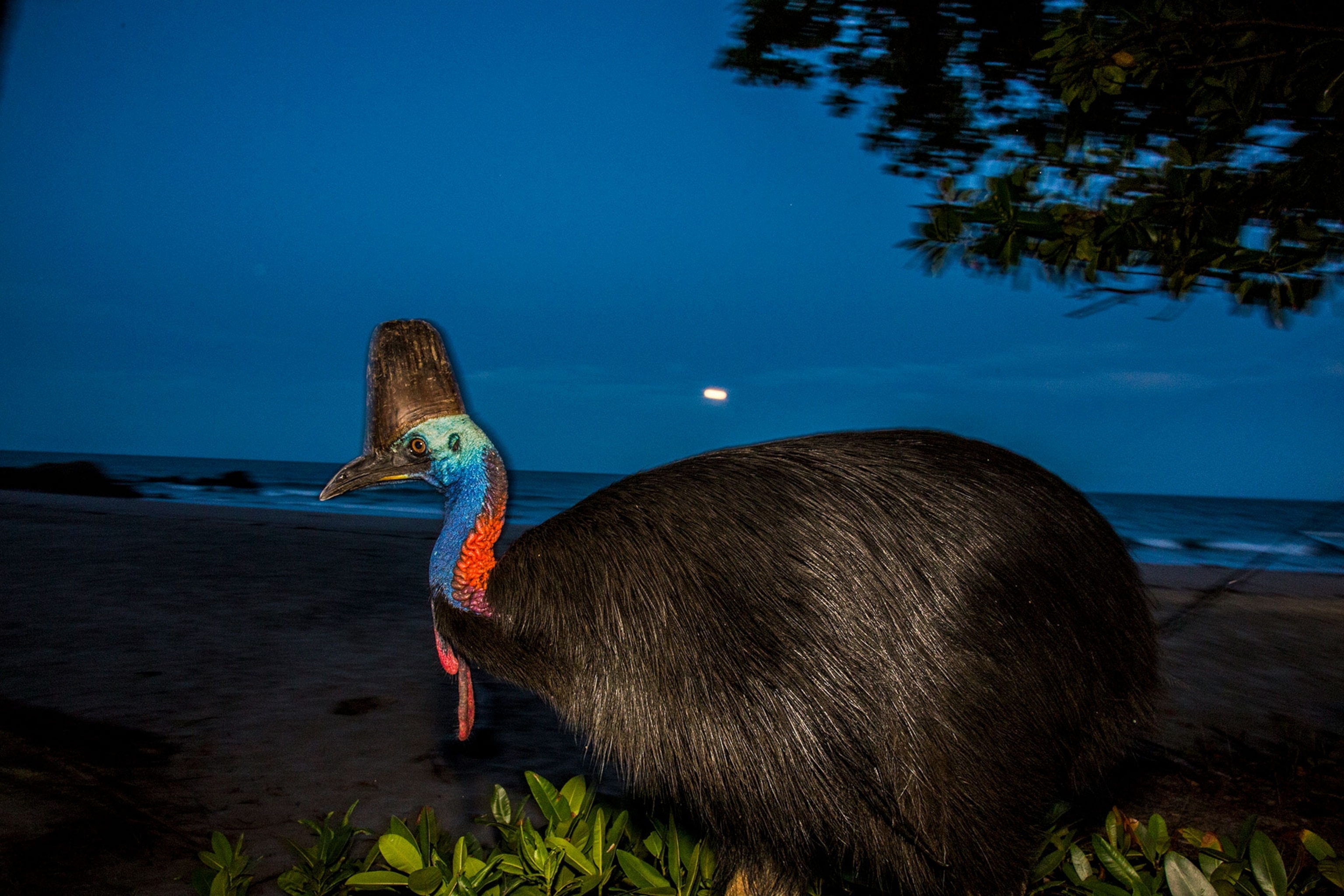

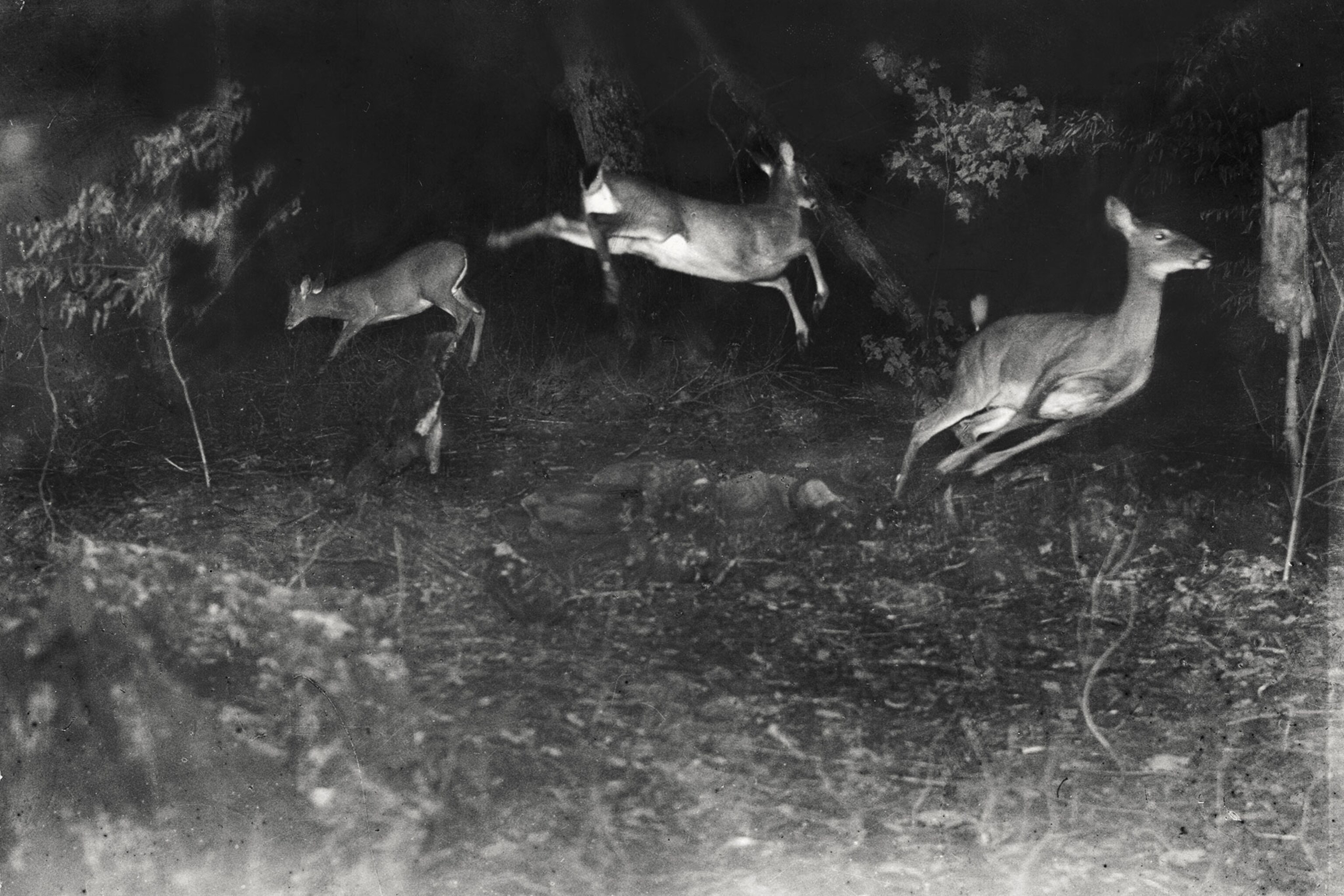

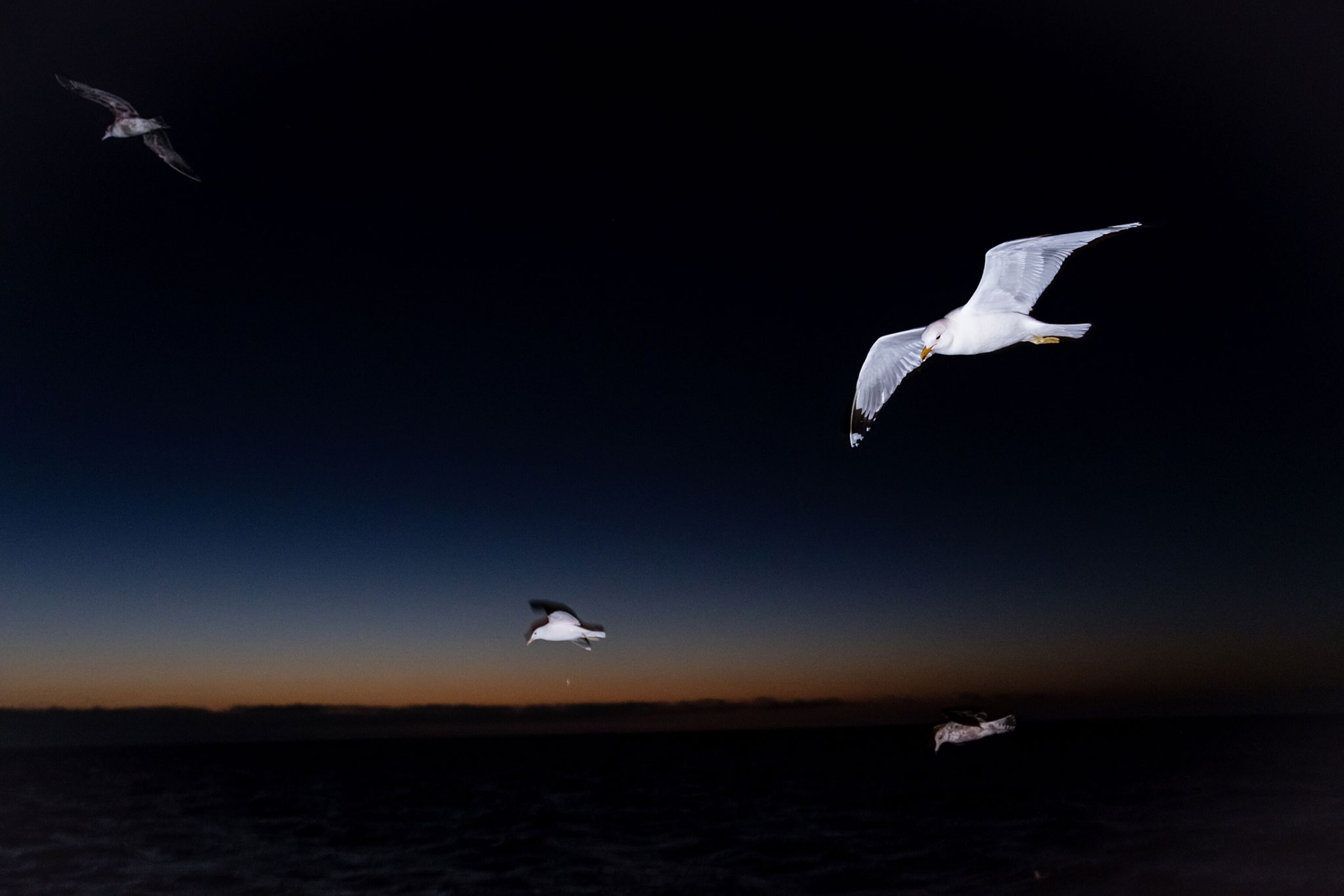
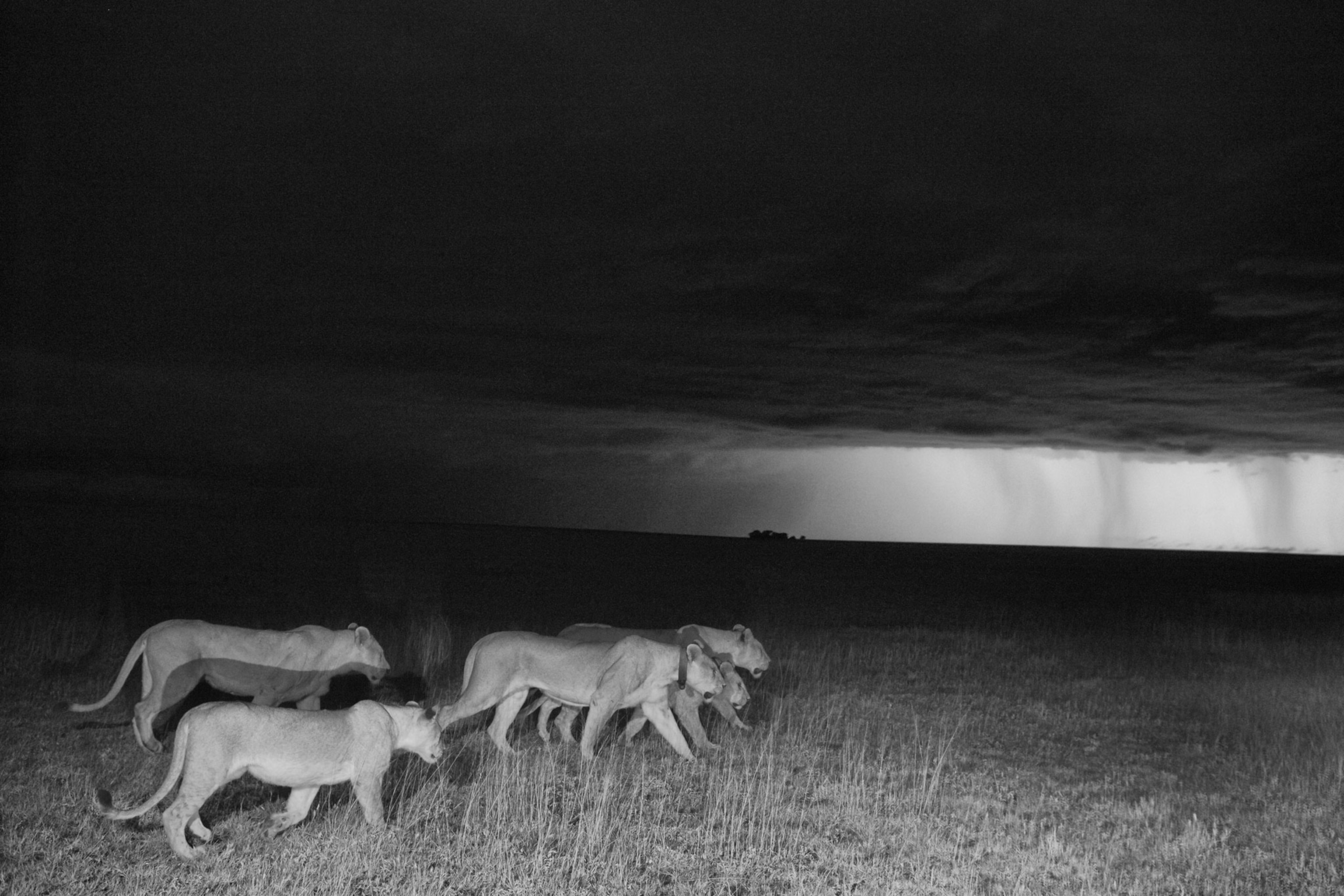
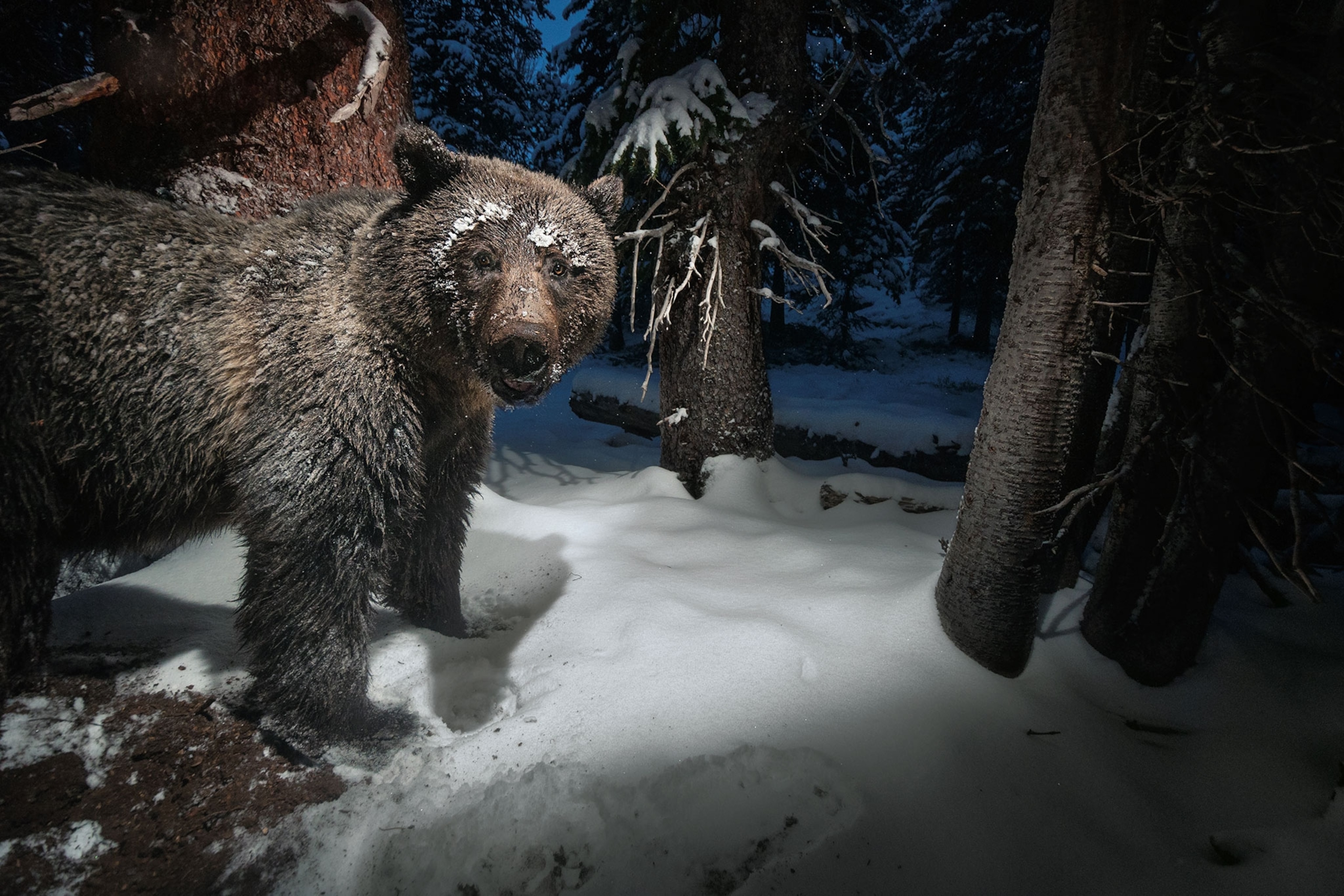
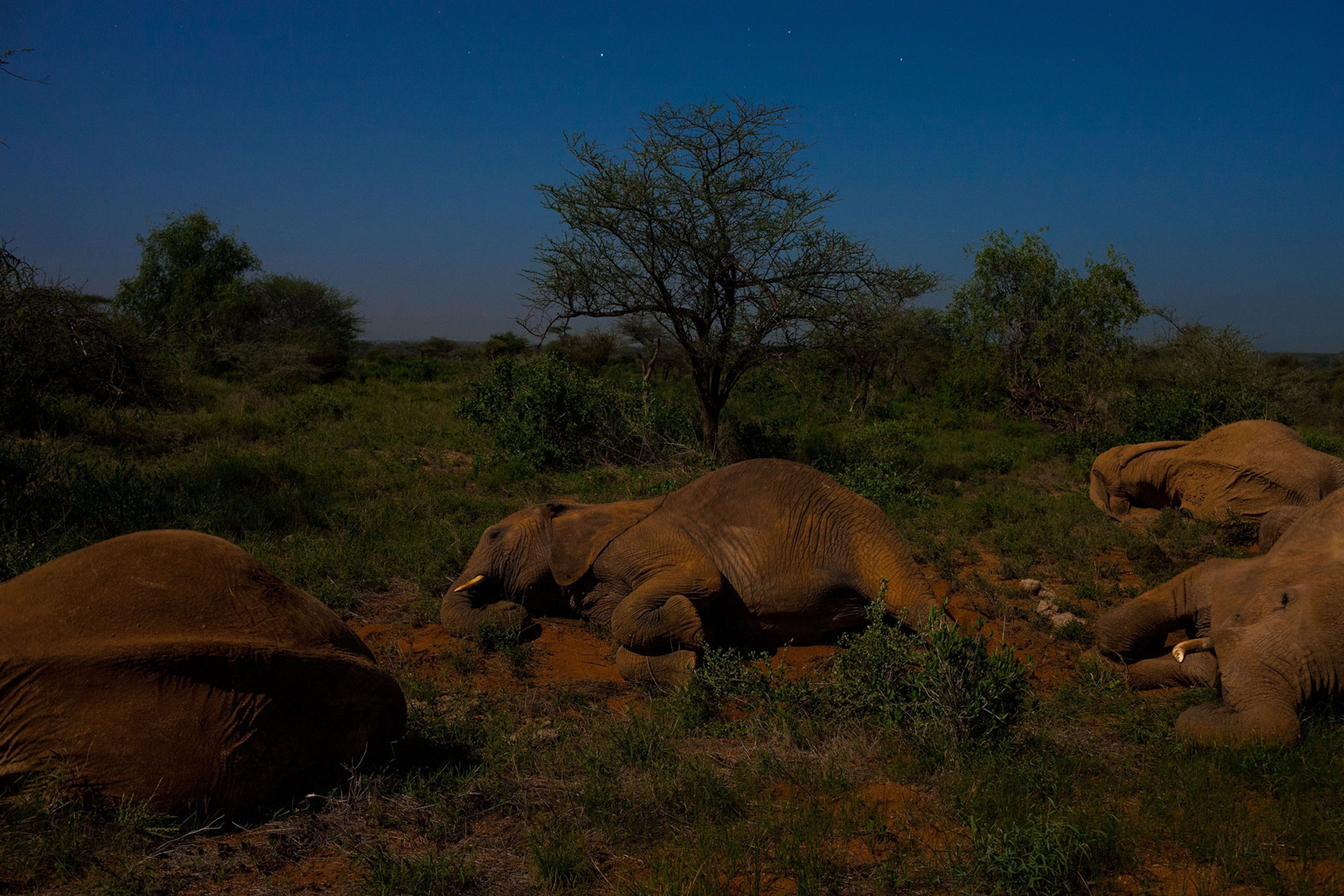
Photos Reveal the Hidden World of Animals at Night
While some animals settle down as the sun begins to set, others are just starting to come alive.
Owls aren't the only animals that become active at night.
In fact, many animals are nocturnal—getting more active and beginning their day as the sun sets. There are a number of reasons different species are active at night, but many animals have evolved nocturnal habits to avoid heat.
Among the animals that prefer cooler nights are species not often photographed in the dark. Hippos and lions, for example, while commonly pictured roaming sunny safari fields, are often active long after the sun sets.
Walk around at night in the more untamed regions of the U.S., and you might see a more varied roster of wildlife than you would during the day. Gray foxes traverse Texas forests and beavers go to work in Grand Teton National Park when night falls.
Night is also when American cougars prefer to travel. The big cats have been pictured slyly traveling through the Hollywood Hills at night, mere miles from the sprawling Los Angeles urban area sitting below.
Having a dark night sky is more than just an opportunity to be covert for many animals. Light pollution from human-made structures can disorient some nocturnal animals, interfering with their navigation and making it difficult for them to see. Newly hatched sea turtles, for example, use the moon and stars to reach the ocean.
Look through the gallery above to see how animals live when the lights are off.
You May Also Like
Go Further
Animals
- This ‘saber-toothed’ salmon wasn’t quite what we thoughtThis ‘saber-toothed’ salmon wasn’t quite what we thought
- Why this rhino-zebra friendship makes perfect senseWhy this rhino-zebra friendship makes perfect sense
- When did bioluminescence evolve? It’s older than we thought.When did bioluminescence evolve? It’s older than we thought.
- Soy, skim … spider. Are any of these technically milk?Soy, skim … spider. Are any of these technically milk?
- This pristine piece of the Amazon shows nature’s resilienceThis pristine piece of the Amazon shows nature’s resilience
Environment
- This pristine piece of the Amazon shows nature’s resilienceThis pristine piece of the Amazon shows nature’s resilience
- Listen to 30 years of climate change transformed into haunting musicListen to 30 years of climate change transformed into haunting music
- This ancient society tried to stop El Niño—with child sacrificeThis ancient society tried to stop El Niño—with child sacrifice
- U.S. plans to clean its drinking water. What does that mean?U.S. plans to clean its drinking water. What does that mean?
History & Culture
- Séances at the White House? Why these first ladies turned to the occultSéances at the White House? Why these first ladies turned to the occult
- Gambling is everywhere now. When is that a problem?Gambling is everywhere now. When is that a problem?
- Beauty is pain—at least it was in 17th-century SpainBeauty is pain—at least it was in 17th-century Spain
- The real spies who inspired ‘The Ministry of Ungentlemanly Warfare’The real spies who inspired ‘The Ministry of Ungentlemanly Warfare’
- Heard of Zoroastrianism? The religion still has fervent followersHeard of Zoroastrianism? The religion still has fervent followers
Science
- Here's how astronomers found one of the rarest phenomenons in spaceHere's how astronomers found one of the rarest phenomenons in space
- Not an extrovert or introvert? There’s a word for that.Not an extrovert or introvert? There’s a word for that.
- NASA has a plan to clean up space junk—but is going green enough?NASA has a plan to clean up space junk—but is going green enough?
- Soy, skim … spider. Are any of these technically milk?Soy, skim … spider. Are any of these technically milk?
- Can aspirin help protect against colorectal cancers?Can aspirin help protect against colorectal cancers?
Travel
- What it's like to hike the Camino del Mayab in MexicoWhat it's like to hike the Camino del Mayab in Mexico
- Is this small English town Yorkshire's culinary capital?Is this small English town Yorkshire's culinary capital?
- Follow in the footsteps of Robin Hood in Sherwood ForestFollow in the footsteps of Robin Hood in Sherwood Forest
- This chef is taking Indian cuisine in a bold new directionThis chef is taking Indian cuisine in a bold new direction




